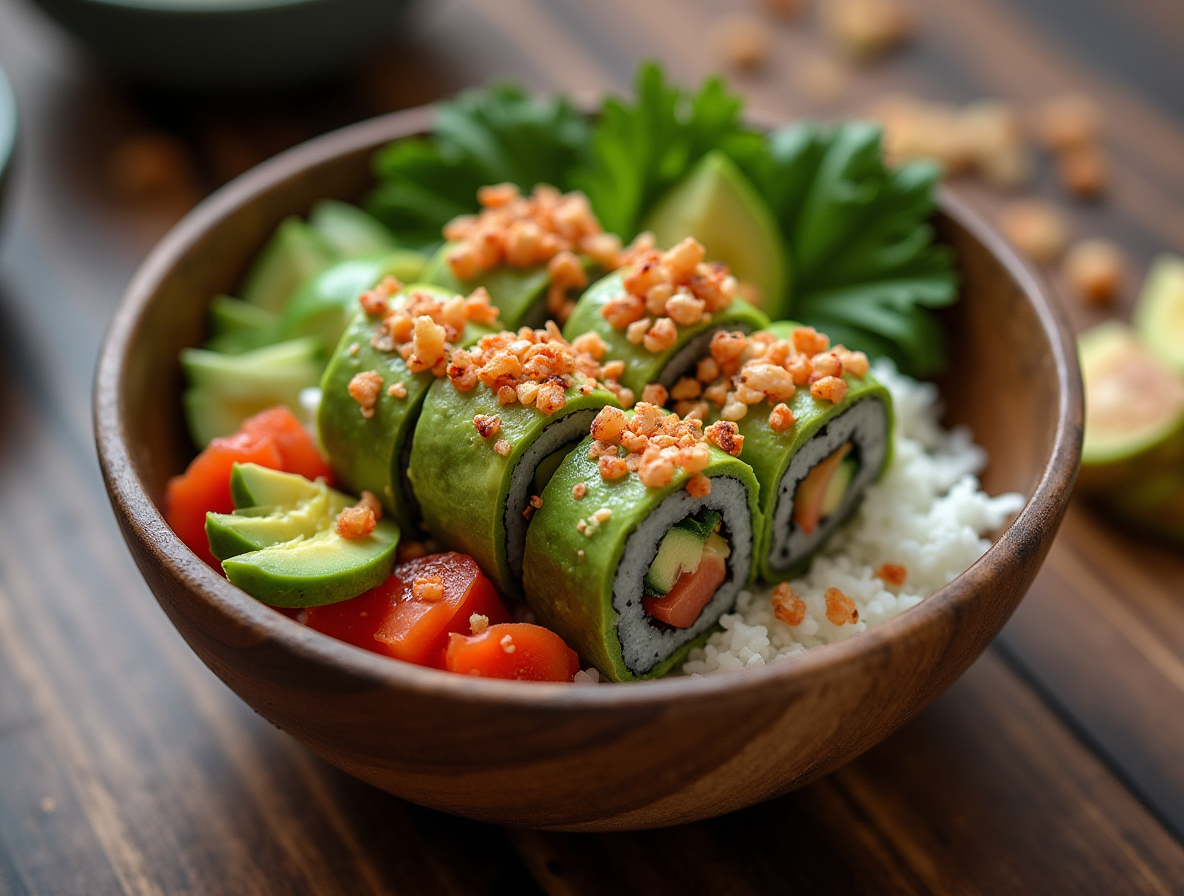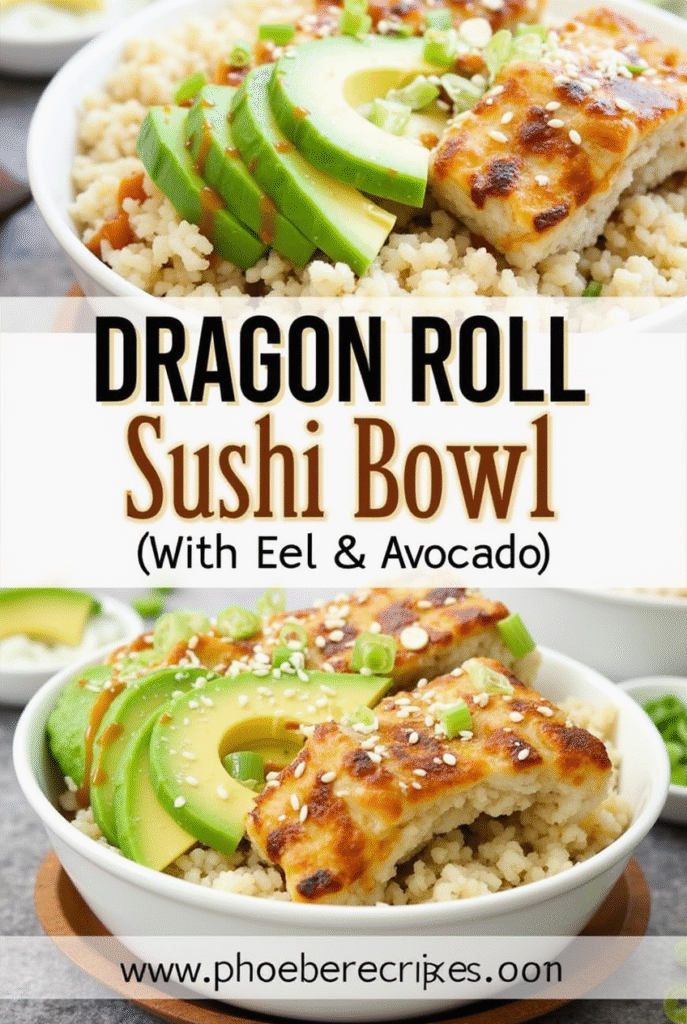How to Make Perfect Dragon Roll Sushi: Secret Ingredients & Chef Tips
Dragon roll sushi ingredients combine to create what is surprisingly the number one choice among sushi enthusiasts, even surpassing the classic California roll. As a sushi lover myself, I can understand why this visually striking creation has captured so many hearts and palates across the world.
What is a dragon roll exactly? Traditionally, this uramaki-style roll (with rice on the outside) features shrimp tempura and cucumber inside, topped with thinly sliced avocado arranged to resemble dragon scales. Additionally, the dragon roll ingredients typically include fish eggs and delicious sauces like spicy mayonnaise and eel sauce. In fact, the classic eel dragon roll variation uses unagi (freshwater eel) instead of shrimp tempura, creating a different but equally delightful flavor profile. What’s in a dragon roll can vary slightly between restaurants, but the signature avocado “scales” and the perfect balance of textures remain consistent hallmarks of this beloved sushi creation.
What is a Dragon Roll and Why It’s Special
The dragon roll stands out as one of the most visually impressive creations in modern sushi artistry. Originally crafted in the 1980s by creative Japanese chefs working in North America, this inside-out roll represents the fusion of traditional Japanese techniques with Western flavor preferences. The name itself derives from its distinctive appearance – when plated, the vibrant green avocado slices layered atop the roll resemble the scales of a mythical dragon, while the eel sauce drizzled across creates the impression of fiery breath.
What truly sets the dragon roll apart from other sushi varieties is its perfect balance of contrasting textures and temperatures. The warm, crispy shrimp tempura creates a delightful juxtaposition against the cool, creamy avocado. Furthermore, the combination of sweet eel sauce with the subtle heat of spicy mayonnaise delivers a complex flavor profile that appeals to both sushi novices and connoisseurs alike.
Beyond the classic preparation described in the introduction, regional variations have emerged across different culinary landscapes. Some versions incorporate unagi (freshwater eel) within the roll rather than as a topping. Others feature salmon or tuna in place of tempura, while more elaborate interpretations add mango for a tropical twist or jalapeño for extra heat.
Notably, the dragon roll embodies the principle of umami – that elusive fifth taste sensation prized in Japanese cuisine. The combination of seafood, sauces, and vegetables creates layers of savory depth that continue to evolve with each bite. The roll essentially serves as a canvas for chefs to demonstrate their mastery of balance and presentation.
The popularity of the dragon roll can be attributed not just to its taste but also to its theatrical presentation. When served, it often becomes the centerpiece of the table – a photogenic creation that satisfies our modern desire to share visually striking food experiences. This dramatic esthetic appeal, coupled with its accessible flavor profile, has cemented the dragon roll’s status as a gateway sushi that introduces countless diners to the broader world of Japanese cuisine.
Secret Ingredients and Tools You’ll Need
Creating the perfect dragon roll at home requires gathering specific ingredients and tools beforehand. To achieve restaurant-quality results, precision in both selection and preparation makes all the difference.
For the essential dragon roll sushi ingredients, first gather high-quality short-grain Japanese rice – the foundation of any good sushi. Next, secure nori sheets (seaweed) that appear glossy and crisp. The star protein traditionally comes from shrimp tempura, though unagi (freshwater eel) serves as an excellent alternative for an authentic eel dragon roll. Cucumber provides necessary crunch, while perfectly ripe avocados deliver the signature “dragon scales” appearance.
What truly elevates a homemade dragon roll are the finishing touches. Tobiko (flying fish roe) adds color and a delightful textural pop. Moreover, two sauces prove indispensable: unagi sauce (sweet eel sauce) and spicy mayonnaise. For the latter, combine quality mayonnaise with sriracha to taste. Subsequently, a light dusting of toasted sesame seeds completes the flavor profile.
Tool-wise, invest in a good-quality bamboo rolling mat (makisu) wrapped in plastic film to prevent sticking. A sharp knife is undoubtedly crucial – specifically, a long, thin-bladed knife kept very sharp and moistened between cuts. Additionally, prepare a small bowl of water mixed with rice vinegar to keep your hands wet during rolling, preventing the rice from sticking to your fingers.
Other helpful implements include a rice paddle for mixing sushi rice with vinegar seasoning, a rice cooker for consistent results, and a cutting board dedicated solely to sushi preparation. Particularly important is a rice washing bowl with drainage holes to properly rinse your sushi rice.
Freshness remains paramount when selecting your ingredients. Purchase seafood from reputable sources and use avocados that yield slightly to gentle pressure. The magic of an exceptional dragon roll lies not just in technique but in starting with impeccable ingredients and proper tools.
Step-by-Step: How to Make the Perfect Dragon Roll
Now comes the exciting part—rolling your own dragon! With sushi rice and ingredients prepared, let’s create this impressive dish following chef-approved techniques.
Begin with your sushi rice. After cooking, mix it with a simple vinegar seasoning of rice vinegar, sugar, and salt. For perfect texture, use exactly a 1-to-1 ratio of rice to water by volume. This creates slightly firmer rice that will absorb the sushi vinegar without becoming mushy.
First, completely wrap your bamboo mat in plastic film to prevent sticking. Place a half sheet of nori shiny-side down on the mat. Dip your fingers in a mixture of water and rice vinegar (tezu), then spread about ¾ cup of room-temperature sushi rice evenly across the nori, leaving a thin border.
Afterward, flip the nori-rice combination over so the rice faces down against the plastic-covered mat. Along the bottom edge closest to you, arrange two pieces of shrimp tempura with tails sticking out. Add cucumber strips and a sprinkle of tobiko.
Grasp the bottom of the mat, then roll it up and over your fillings, tucking them tightly inside. Continue rolling until you form a complete cylinder, squeezing gently through the mat to shape the roll.
For the signature dragon appearance, slice half an avocado thinly and carefully arrange these slices across the top of your roll. The slices should slightly overlap like scales. Once placed, cover with plastic wrap and use the bamboo mat to gently press the avocado onto the roll’s surface.
Using a sharp knife moistened with water between each cut, slice your dragon roll into eight equal pieces. Clean your knife after each slice to prevent tearing the delicate avocado topping.
Finally, garnish with additional tobiko, a drizzle of spicy mayonnaise, unagi sauce, or a light sprinkle of sesame seeds according to your preference before serving with wasabi and pickled ginger.
Conclusion
Dragon rolls certainly stand out as masterpieces in the sushi world, combining visual artistry with incredible flavor. Throughout this guide, we’ve explored what makes these rolls special, from their eye-catching avocado scales to their perfect balance of textures and temperatures. Additionally, we’ve uncovered the secret ingredients and essential tools that professional chefs use to create these impressive creations.
Making your own dragon roll might seem intimidating at first. Nevertheless, the step-by-step process we’ve outlined breaks down this seemingly complex dish into manageable parts. Your first attempt might not look perfect, but practice will undoubtedly improve both appearance and flavor.
The beauty of dragon rolls lies not only in their dramatic presentation but also in their versatility. Whether you prefer the classic shrimp tempura filling or want to experiment with unagi, salmon, or even vegetarian options, the basic technique remains the same. Above all, fresh ingredients make the difference between an ordinary roll and an extraordinary culinary experience.
Homemade sushi creates wonderful opportunities for gathering friends and family around your kitchen counter. Furthermore, mastering this technique opens doors to exploring other sushi varieties using the same fundamental skills.
Remember that sushi-making combines technical skill with artistic expression. Therefore, each dragon roll you create becomes your unique signature dish. While your first few attempts might require patience, the satisfaction of creating such a stunning dish at home feels incredibly rewarding.
Japanese cuisine has always balanced tradition with innovation, and the dragon roll perfectly exemplifies this philosophy. Now that you have all the knowledge needed to create this spectacular sushi at home, it’s time to gather your ingredients, sharpen your knife, and bring the dragon to life on your own dining table!
FAQs
Q1. What are the key ingredients for a dragon roll sushi? A dragon roll typically includes sushi rice, nori (seaweed), shrimp tempura or unagi (eel), cucumber, avocado, tobiko (fish roe), and sauces like spicy mayonnaise and unagi sauce. The avocado is sliced thinly and arranged on top to resemble dragon scales.
Q2. How do I achieve the dragon scale effect on my sushi roll? To create the dragon scale effect, thinly slice half an avocado and carefully arrange the slices across the top of your rolled sushi. The slices should slightly overlap. Cover with plastic wrap and gently press the avocado onto the roll’s surface using a bamboo mat.
Q3. Can I make a vegetarian version of a dragon roll? Yes, you can create a vegetarian dragon roll by substituting the shrimp tempura or eel with plant-based alternatives like tempura-fried vegetables or marinated tofu. Keep the signature avocado topping and adjust the sauces to be vegetarian-friendly.
Q4. What tools are essential for making dragon rolls at home? Essential tools for making dragon rolls include a bamboo rolling mat (makisu), a sharp knife, a rice cooker, a rice paddle, and a cutting board. A rice washing bowl with drainage holes is also helpful for properly rinsing the sushi rice.
Q5. How can I prevent the rice from sticking to my hands while making sushi? To prevent rice from sticking to your hands, prepare a small bowl of water mixed with rice vinegar (called tezu). Dip your fingers in this mixture before handling the sushi rice. This technique helps keep your hands moist and makes working with the sticky rice much easier.


